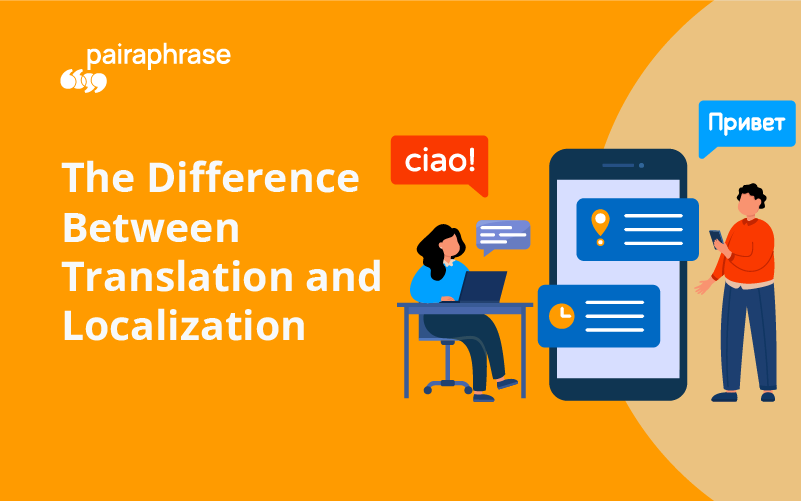Are you wondering, “What is the difference between translation and localization?” If so, we’re not surprised. Translation and localization are commonly confused terms in the language industry. Oftentimes, they are used interchangeably. However, when it comes to translation vs localization, those words aren't one in the same.
So what is the difference? In this article, we are going to provide the definition of each and break down the various applications of translation and localization activities.
What’s the Difference Between Translation and Localization?
The difference between translation and localization lies in what the object is that’s being reproduced in another language.
What is Translation?
Translation (also referred to as “t9n”) is the act of converting written text into another language. As a noun, it refers to the text in the target language that has been converted from its source language. Machines and humans are both utilized in the production of translations.
What is Translation Used for?
Translation is used for just about any type of written material you can think of.
What is Localization?
Localization (also spelled “localisation” or referred to as “l10n”) is the process of adapting services, products and content in another language and/or for another culture. It not only involves text translation, but also the visuals, formatting, layout, user experience, behaviors and linguistic nuances in regards to communicating with consumers from another culture. It also considers displaying information differently for another locale or country, such as currency, date format and local laws.
What is Localization Used for?
Some examples of what you use localization for are:
- Software user interfaces
- Mobile applications
- Multilingual websites
- Displaying local content
- Marketing materials
- Training materials
- Guides & instructions
- Legal requirements
- Online help centers
- Service documents
Benefits of Localization vs. Pure Translation
Localization comes with additional advantages over just purely translating written text for the target audience. Here are some examples.
Branding
When you localize content for a specific audience, it makes you stand out as a brand. You improve the experience and relevance to the local consumer.
Comprehension
If your content is localized, there’s a greater chance your consumer or end user will enjoy a better experience and feel more confident doing business with you.
Purchase Behavior
Localization also means that you’ll market products that better fit your local audience. It can also help a customer further down the purchase funnel. Furthermore, it can actually result in a better conversion rate.
Consumer Loyalty
Because localization can make it easy to understand, purchase and use your product or service, a customer is likely to return to you for business time and again.
How to Reduce Localization Costs
Localization is a more complex process than pure translation. This can make the act of localization more expensive. Therefore, you will likely welcome some suggestions for lowering the cost.
While computer-assisted translation tools typically focus on enhancing productivity for the written translation component of localization, they can significantly help reduce your costs.
Pairaphrase can help you do just that. It’s the AI-powered translation management system for teams that value smarter, faster and safer translation. It can drastically reduce the costs and hours worked on producing a translation or localized content. While it is not strictly localization software, it will significantly enhance your productivity.



.png)

.png)



